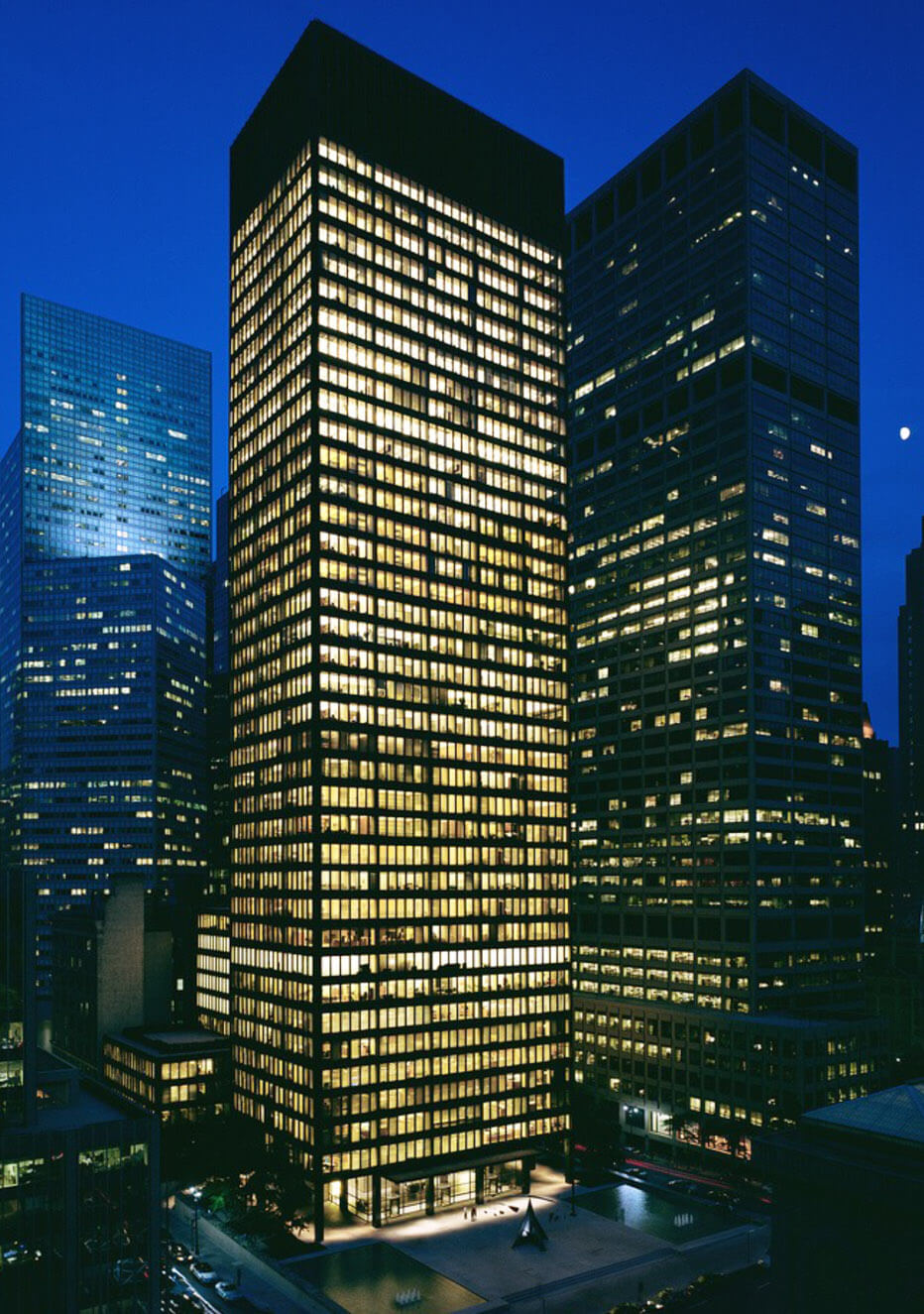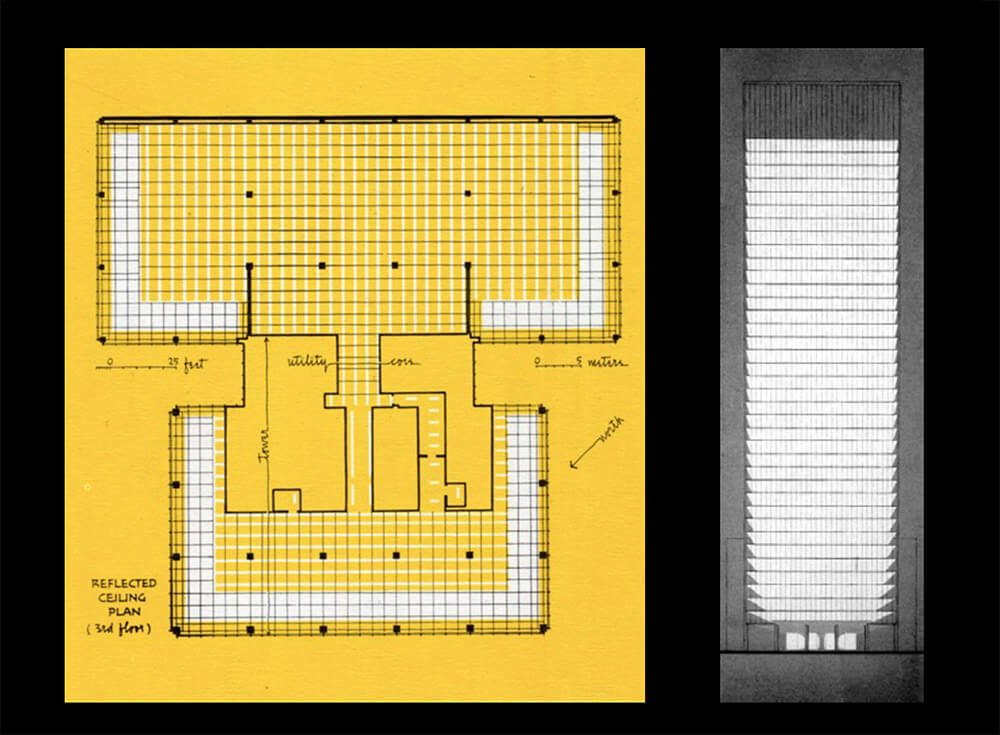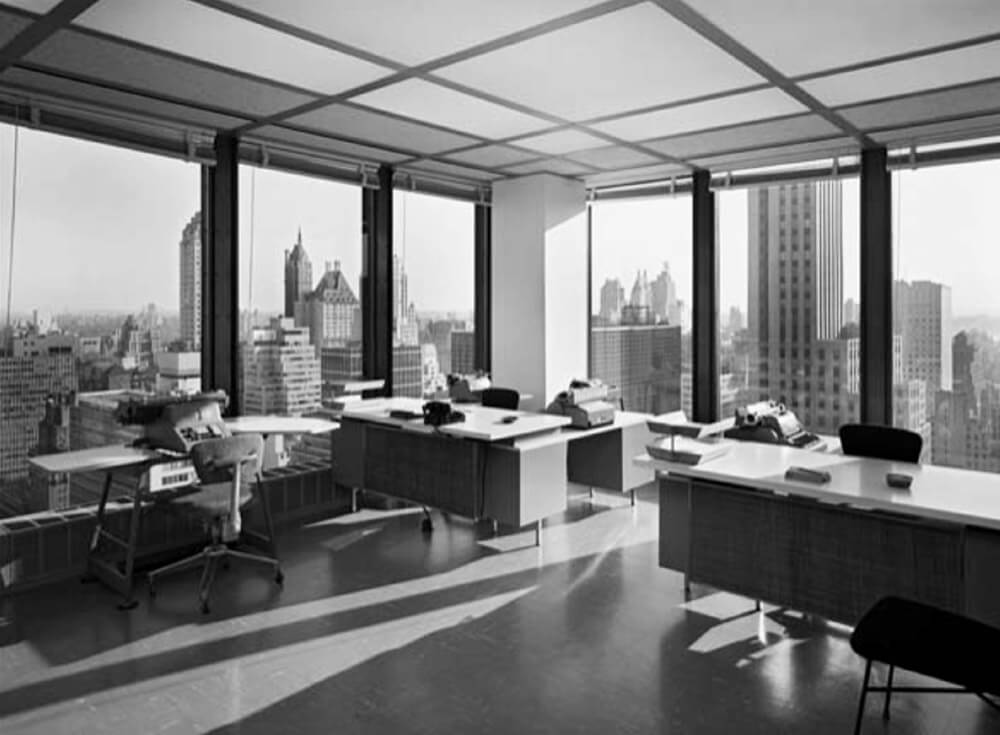Seagram Building
New York, NY 1957
Ludwig Mies van der Rohe and Philip Johnson, Architects

The Seagram Building at night
Kelly’s illumination of the Seagram Building uses light as a unifying, architectural element. As with Philip Johnson’s Glass House almost a decade earlier, Kelly’s contribution to the lighting of the tower’s lobby and offices reveals his understanding of the new glass curtain wall aesthetics which aimed to reduce the distinction between outside and inside.
Materials were fundamental to architect Ludwig Mies van der Rohe’s concern for “Baukunst” – the craft of good building. Early in the design process, Kelly suggested using a highly reflective, light travertine stone for the building core walls in the lobby, instead of the dark marble initially proposed by Mies. Kelly knew that in order to see the lobby from outside, through the floor-to-ceiling glass window walls, the building core had to glow. With fixture manufacturer Edison Price, he designed a wall washing system using PAR-lamps. Located along the perimeter of the ceiling, it uniformly illuminates the lobby walls.
The effect accentuates the height of the ceiling and makes the building seem to float. On both sides of the lobby’s glass walls, Kelly placed two rows of downlights. Their linear pool of light defines the lobby’s perimeter and allows the eye to visually penetrate the glass. Another row of downlights under the entrance canopy projects a narrow slit of light, extending the interior glow of the building’s lobby onto the plaza. Conceived by Mies, a continuous luminous ceiling forms a band inside the building’s glass-walled perimeter and is the primary lighting element in the office tower. Kelly’s principal contribution to the luminous panel system, developed by Noel Florence for Lightolier, was his specification of warm white deluxe fluorescent lamps, instead of cool white, the standard at the time.
The luminous ceiling was circuited to produce two levels of illumination. During office hours, the system was designed to maintain a light level of 85 footcandles. For the “tower of light” effect in the evening, Kelly specified a “night circuit” which uses separate lamps that run at one quarter of their maximum output and produce a light level of 20 footcandles. The selected lamps, with a color rendering index of 85, provide pleasant light with color qualities approaching those of the incandescent lamps used in the lobby.

Luminous ceiling plan for Seagram Building tower from “Definition of Structure,” Progressive Architecture, 1958

Executive corner office with luminous ceiling Seagram Building
Finally, the glass on the office floors is tinted amber-gray to match the color of incandescent even more precisely. To maintain the building’s visual uniformity, venetian blinds with a limited range of adjustments were installed in the windows. The entire system can be set to one of three standardized positions: fully open, fully closed and exactly half open. Kelly’s concept for the illumination of the Seagram Building at night is summarized by the caption he included under its photograph in his portfolio: “a tower of light, but the lobby predominates.”
